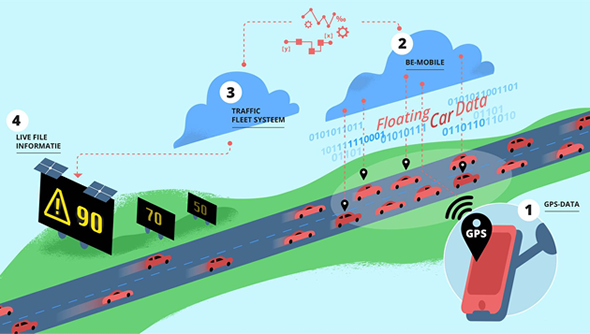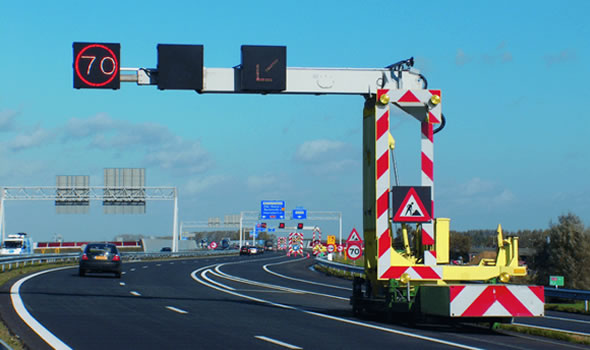Traffic jam detection
The use of traffic jam detection is not new on the Dutch highways. The first developments for traffic signalling and the AID system (Automatic Incident Detection) date back to the 1970s. The system uses, amongst other things, data from vehicle detection loops.
However, the use of traffic jam detection on variable message signs based on Floating Car Data (FCD) is a new and innovative technique with many advantages. It is more accurate than traditional systems, has a wider range and is also cost effective because peripheral equipment is not required along the route.
More accuracy thanks to FCD
With the use of FCD-based traffic jam detection motorists are warned more accurately about upcoming traffic jams. With the traditional system based on vehicle detection loops, traffic jams were measured per segment of 300 metres. FCD makes measurements per segment of 50 metres possible. The system is therefore able to measure a traffic jam more accurately, which means that approaching traffic can be warned sooner. Ultimately, this all increases the safety of motorists.

Lower costs because of the redundancy of peripheral equipment
FCD is collected by anonymous measurements of smartphones and vehicles on the route. The use of FCD makes the use of radar equipment and vehicle detection loops unnecessary. This results in immediate cost savings in the installation and maintenance of the peripheral equipment. In addition, no manpower is needed to install and maintain the peripheral equipment, which also saves money. More importantly however, no roadworks means less nuisance for the motorists.

Available on all roads
An important and unique advantage is that FCD is not only collected on roads where measuring systems are available, but on practically all roads. The data is collected from vehicles that are using GPS, e.g. with smartphones or on-board navigation equipment. This makes it possible to detect traffic jams on highways, regional roads and local roads. The data is available from routes that run from door to door.
